ATtiny88初体验(七):TWI
ATtiny88初体验(七):TWI
TWI模块介绍#
ATtiny88的TWI模块兼容Phillips I2C以及SMBus,支持主从模式,支持7bit地址,最大允许128个不同的从机地址。在多主机模式下,支持总线仲裁。从机模式下的数据速率高达400kHz,且从机地址可编程。在睡眠模式下,支持地址识别唤醒。
注意:为了使用TWI模块, PRR 寄存器中的 PRTWI 位必须设为0。
数据位传输:
开始和停止条件:
地址帧格式:
数据帧格式:
完整的传输过程:
普通模式时钟频率:
高速模式时钟频率:
其中, 为分频后的系统时钟, 为系统时钟。
注意:主机模式下, TWBR 值不能低于10。
下图展现了一个典型传输过程中,应用程序如何与TWI模块交互的。
ATtiny88的TWI拥有四种模式:Master Transmitter、Master Receiver、Slave Transmitter、Slave Receiver。
Master Transmitter模式下的状态码:
Master Receiver模式下的状态码:
Slave Receiver模式下的状态码:
Slave Transmitter模式下的状态码:
其他状态码:
多主机仲裁过程及状态码:
寄存器#
TWBR[7:0]:分频系数,在主机模式下不能低于10。
TWINT:TWI中断标志,必须写1清除(不会执行完中断自动清除),在清除前,必须完成对TWAR寄存器、TWSR寄存器、TWDR寄存器的操作。TWINT置位期间,SCL线始终保持低电平。TWEA:写1使能应答。TWSTA:写1产生START信号,在START信号传输完成后必须手动清除该位。TWSTO:写1产生STOP信号,该位会自动清除。从机状态下,设置该位可以从错误状态中恢复。TWWC:写冲突标志,在TWINT位为1时写TWDR寄存器清除。TWEN:写1使能TWI模块。TWIE:写1使能TWI中断。
TWA[6:0]:TWI从机地址。TWGCE:写1使能General Call。
TWHS:写1使能TWI高速模式。
代码#
下面的代码展示了如何使用ATtiny88的TWI模块与SSD1306 OLED进行通信刷屏。
源文件的组织结构如下:
.
├── Makefile
├── inc
│ ├── serial.h
│ └── serial_stdio.h
└── src
├── main.c
├── serial.c
└── serial_stdio.c
src/main.c 源文件的内容如下:
#include <stdint.h>
#include <stdio.h>
#include <avr/io.h>
#include <avr/interrupt.h>
#include <serial_stdio.h>
#define OLED_ADDR 0x3C
#define oled_write_command(cmd) oled_write_byte(0, cmd)
#define oled_write_data(data) oled_write_byte(1, data)
static void oled_setup(void);
static void oled_write_byte(uint8_t dc, uint8_t data);
static void oled_fill(uint8_t color);
int main(void)
{
cli();
stdio_setup(); // initialize stdio and redirect it to serial
oled_setup(); // initialize oled
sei();
static const uint8_t colors[] = {
0x01, 0x02, 0x04, 0x08, 0x10, 0x20, 0x40,
0x80, 0x40, 0x20, 0x10, 0x08, 0x04, 0x02
};
uint8_t i = 0;
for (;;) {
oled_fill(colors[i]);
i = (i + 1) % sizeof(colors);
}
}
static void oled_setup(void)
{
static const uint8_t cmds[] = {
0xAE, 0xD5, 0x80, 0xA8, 0x3F,
0xD3, 0x00, 0x40, 0x8D, 0x14,
0x20, 0x00, 0xA1, 0xC8, 0xDA,
0x12, 0x81, 0xEF, 0xD9, 0xF1,
0xDB, 0x30, 0xA4, 0xA6, 0xAF
};
TWSR = 0x00; // TWPS = 1
TWBR = 12; // TWBR = 12, freq = 16MHz / (16 + 2 * 12 * 1) = 400KHz
TWHSR = 0x00; // disable high speed mode
for (uint8_t i = 0; i < sizeof(cmds); i++) {
oled_write_command(cmds[i]);
}
oled_fill(0x00);
}
static void oled_write_byte(uint8_t dc, uint8_t data)
{
// transmit START condition
TWCR = _BV(TWINT) | _BV(TWSTA) | _BV(TWEN);
while (!(TWCR & _BV(TWINT)));
// transmit SLA+W
TWDR = OLED_ADDR << 1;
TWCR = _BV(TWINT) | _BV(TWEN);
while (!(TWCR & _BV(TWINT)));
// transmit control byte
TWDR = dc ? 0x40 : 0x00;
TWCR = _BV(TWINT) | _BV(TWEN);
while (!(TWCR & _BV(TWINT)));
// transmit data byte
TWDR = data;
TWCR = _BV(TWINT) | _BV(TWEN);
while (!(TWCR & _BV(TWINT)));
// transmit STOP condition
TWCR = _BV(TWINT) | _BV(TWSTO) | _BV(TWEN);
// Note that TWINT is NOT set after a STOP condition has been transmitted
}
static void oled_fill(uint8_t color)
{
oled_write_command(0x21);
oled_write_command(0x00);
oled_write_command(0x7F);
oled_write_command(0x22);
oled_write_command(0x00);
oled_write_command(0x07);
for (uint8_t i = 0; i < 128; i++) {
for (uint8_t j = 0; j < 8; j++) {
oled_write_data(color);
}
}
}
参考资料#
作者:chinjinyu
出处:https://www.cnblogs.com/chinjinyu/p/17696396.html
版权:本作品采用「署名-非商业性使用-相同方式共享 4.0 国际」许可协议进行许可。
本文来自博客园,作者:chinjinyu,转载请注明原文链接:https://www.cnblogs.com/chinjinyu/p/17696396.html


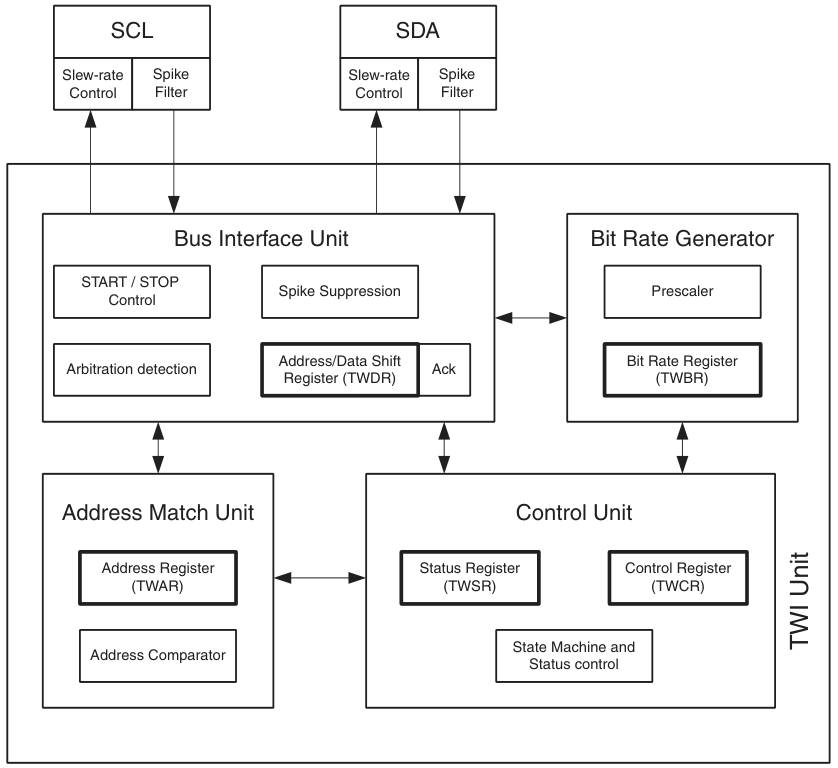

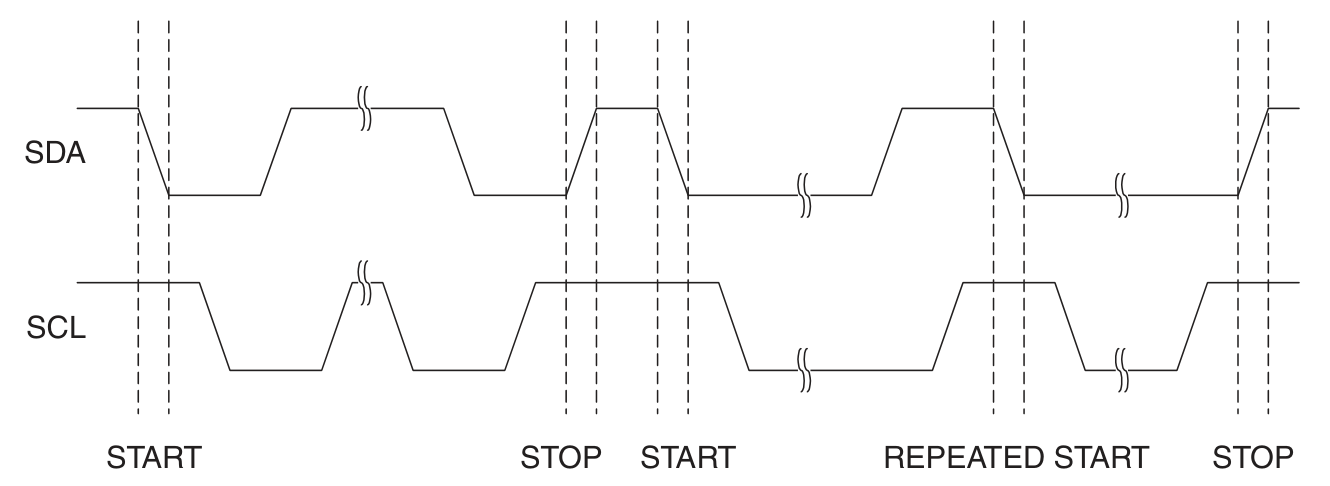

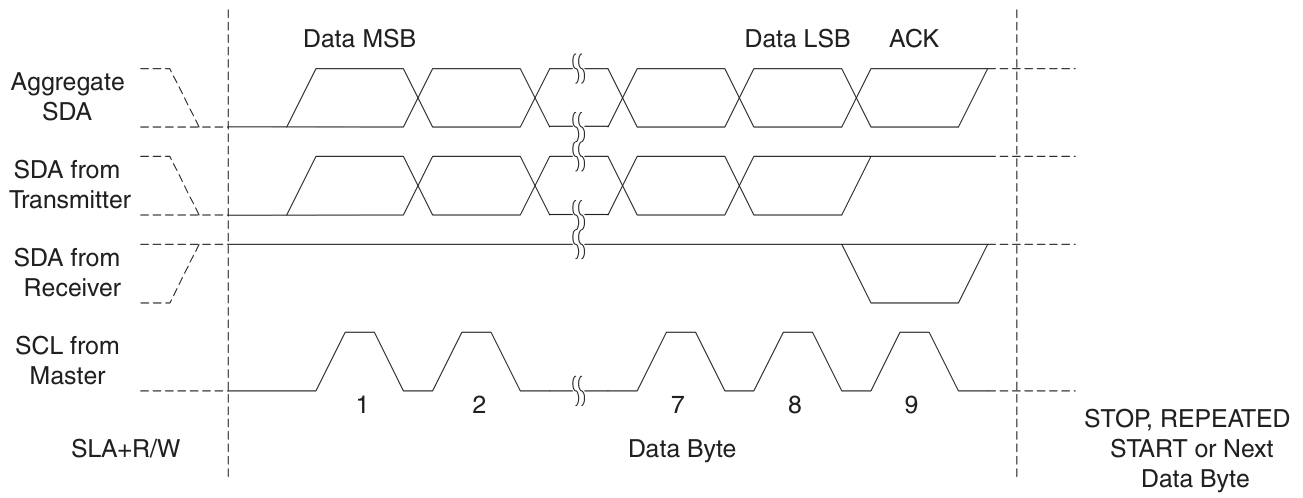

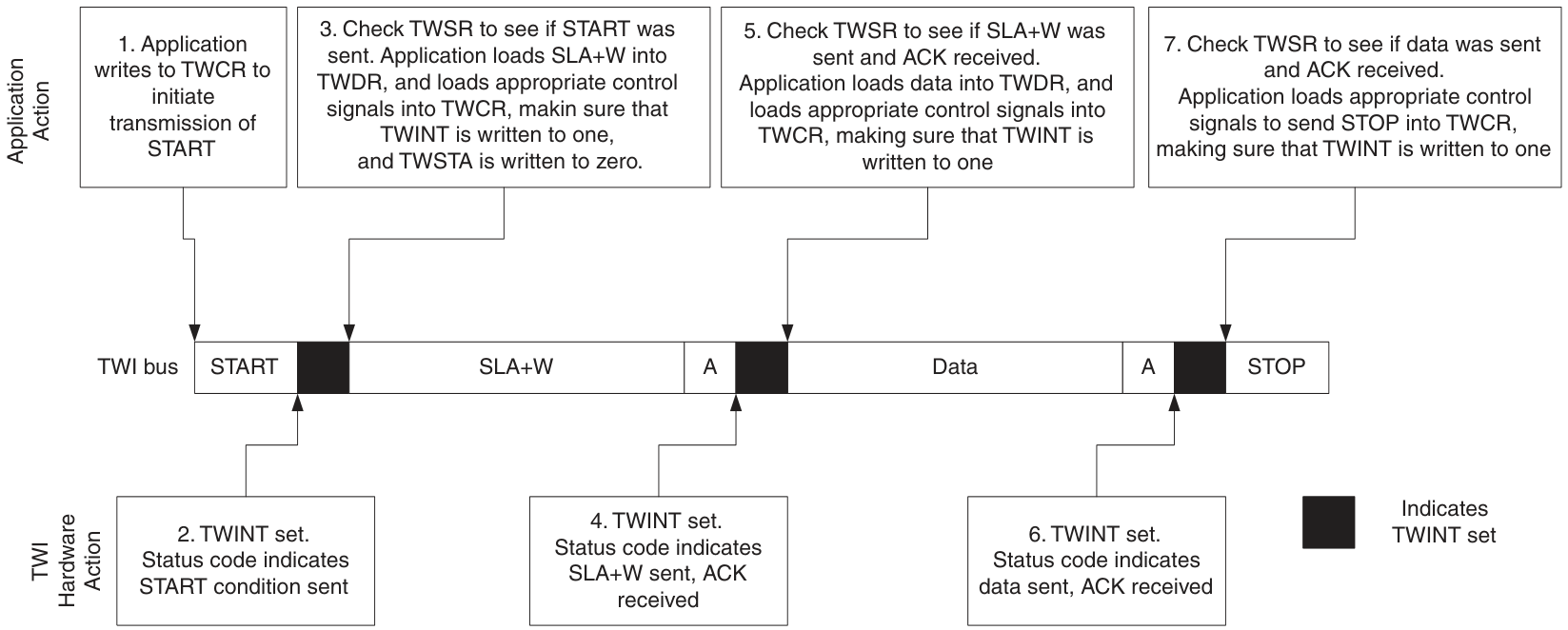
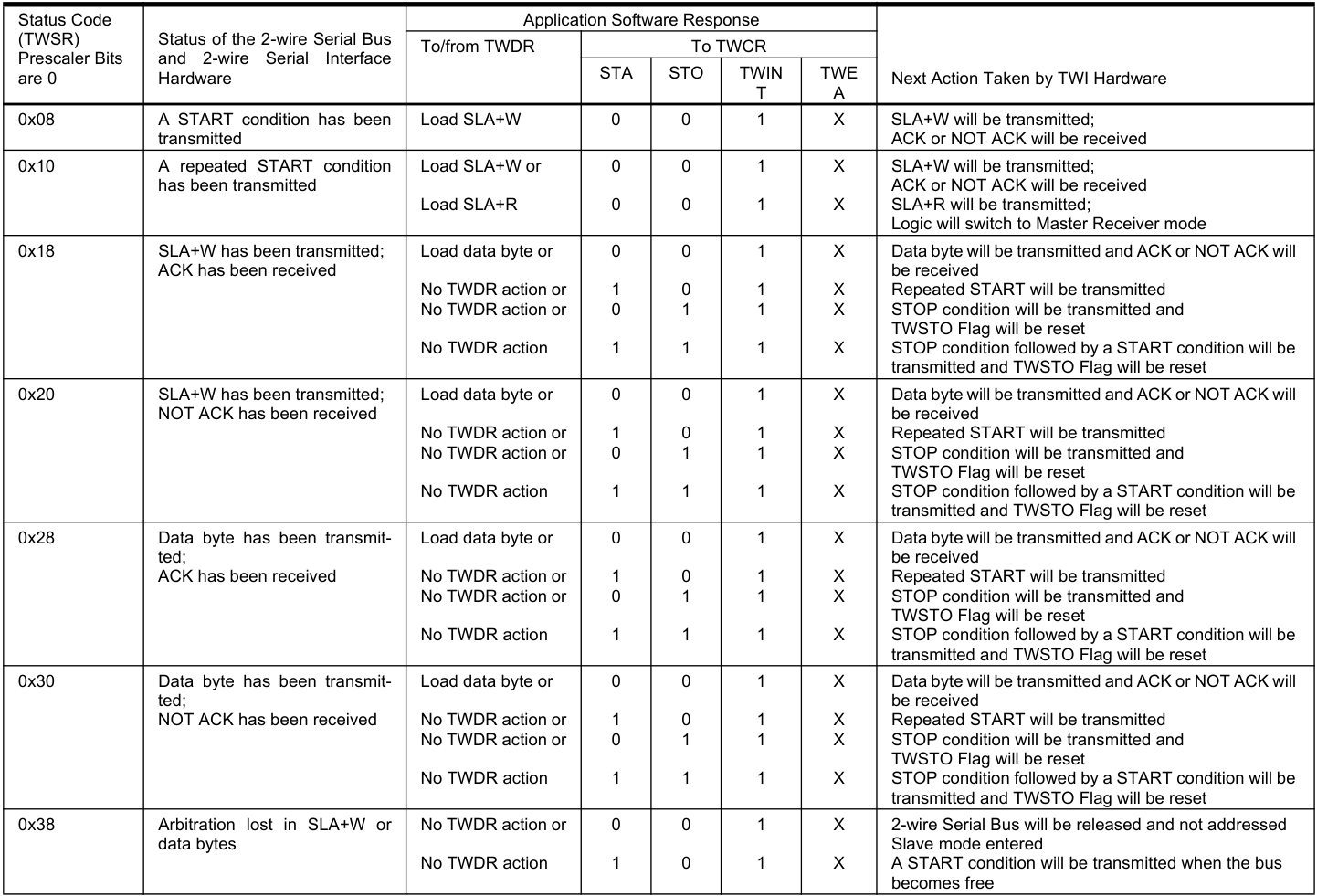
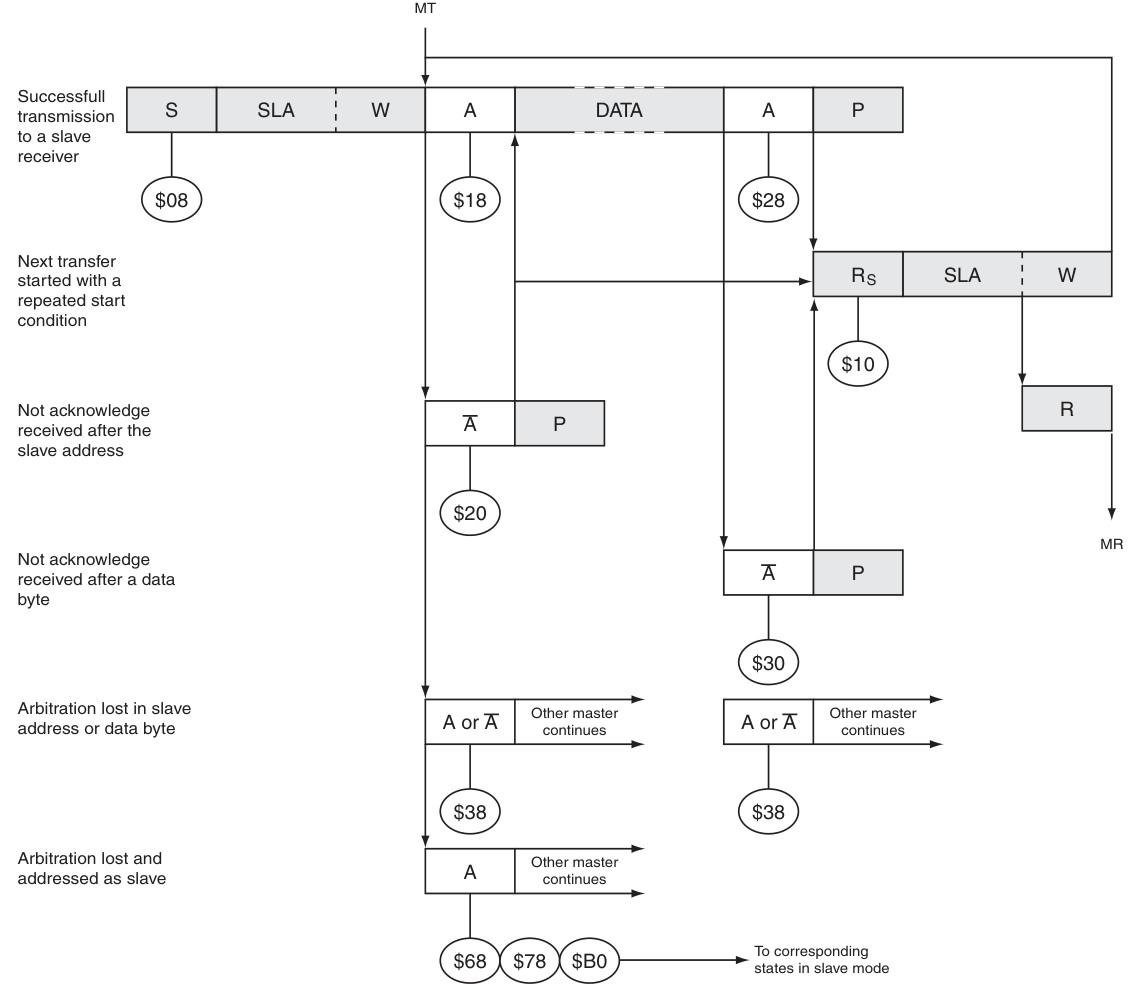
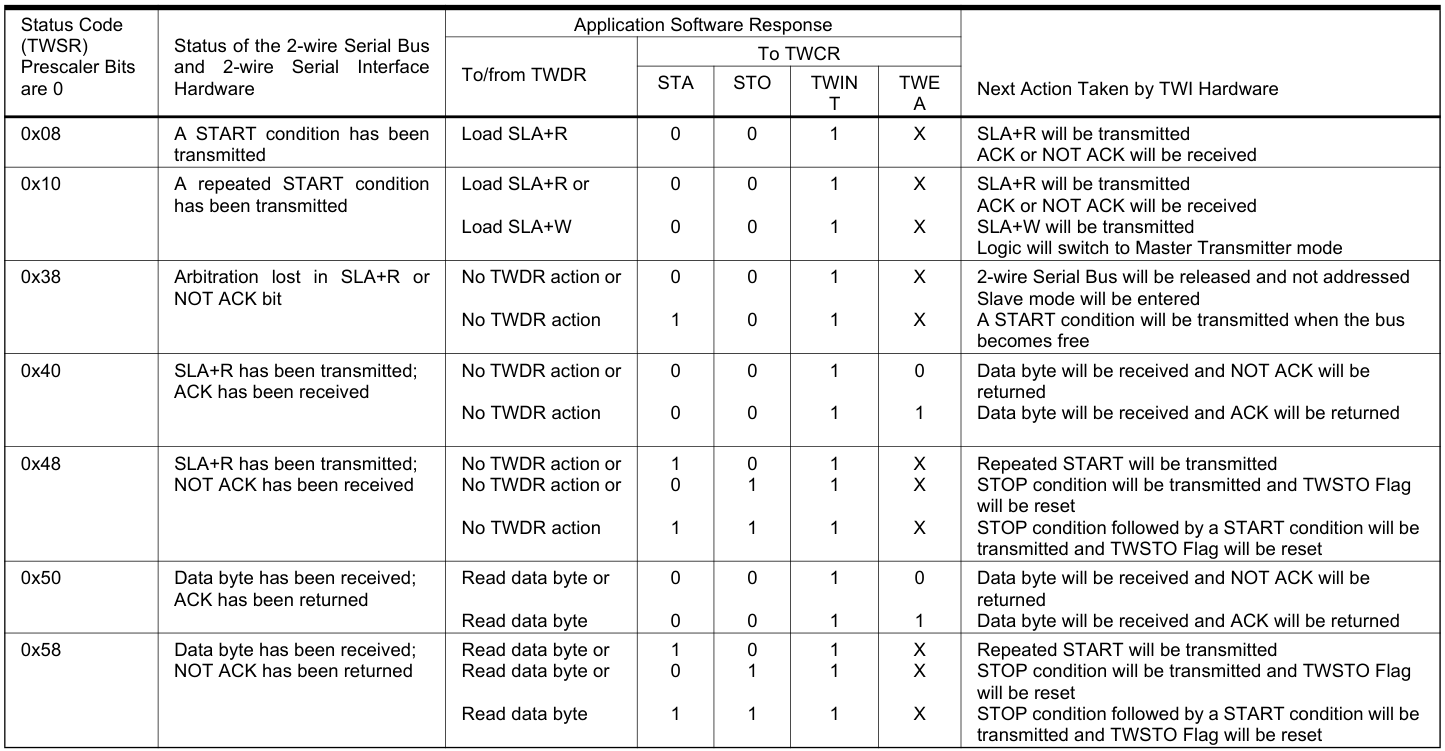
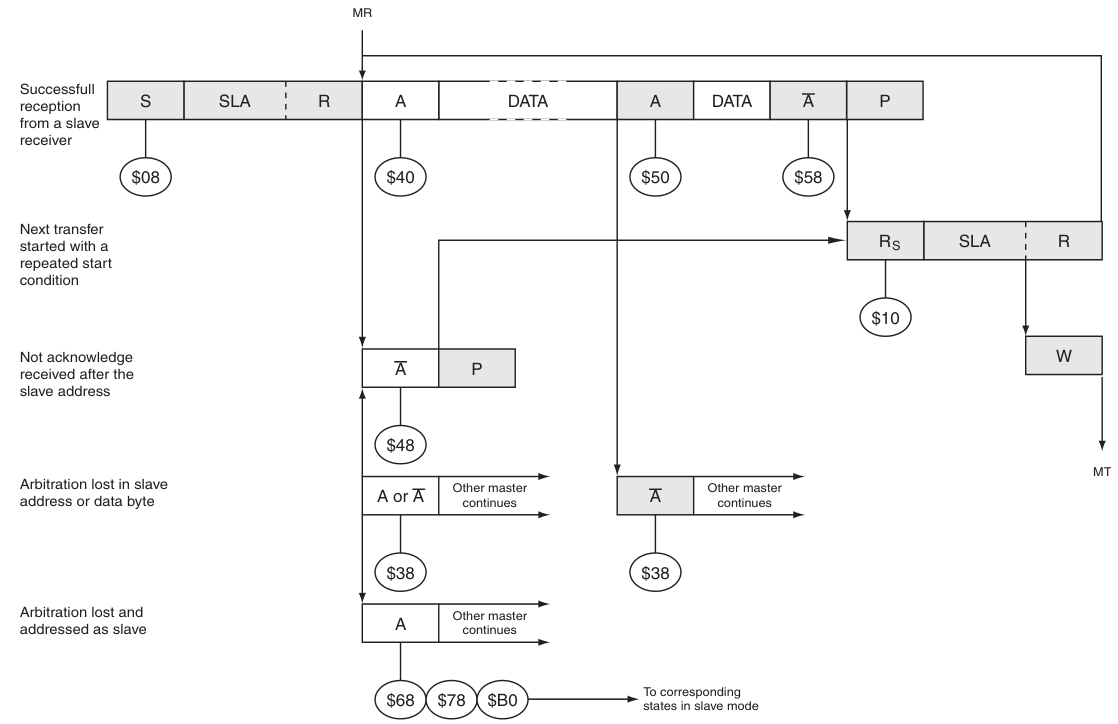
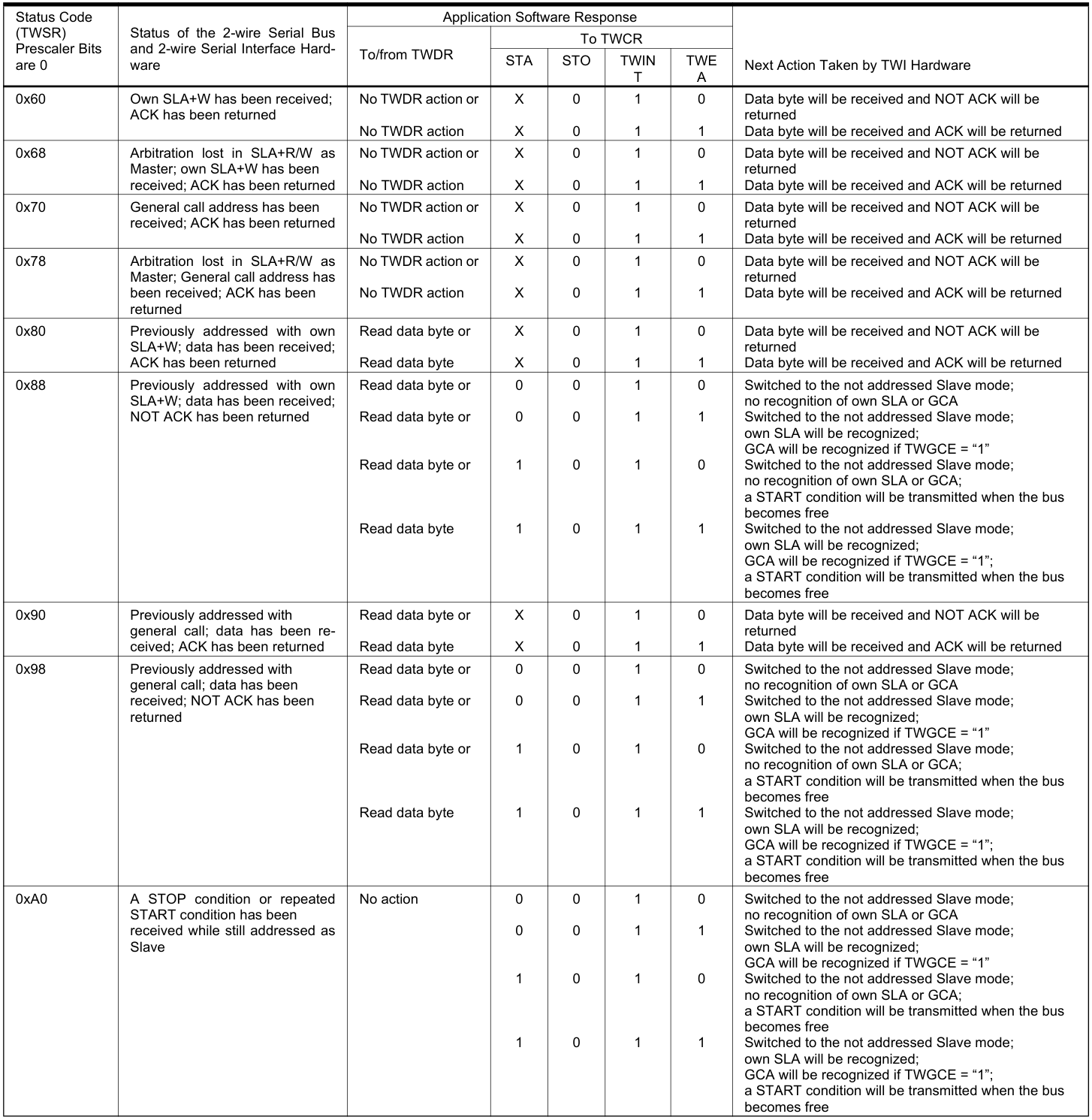
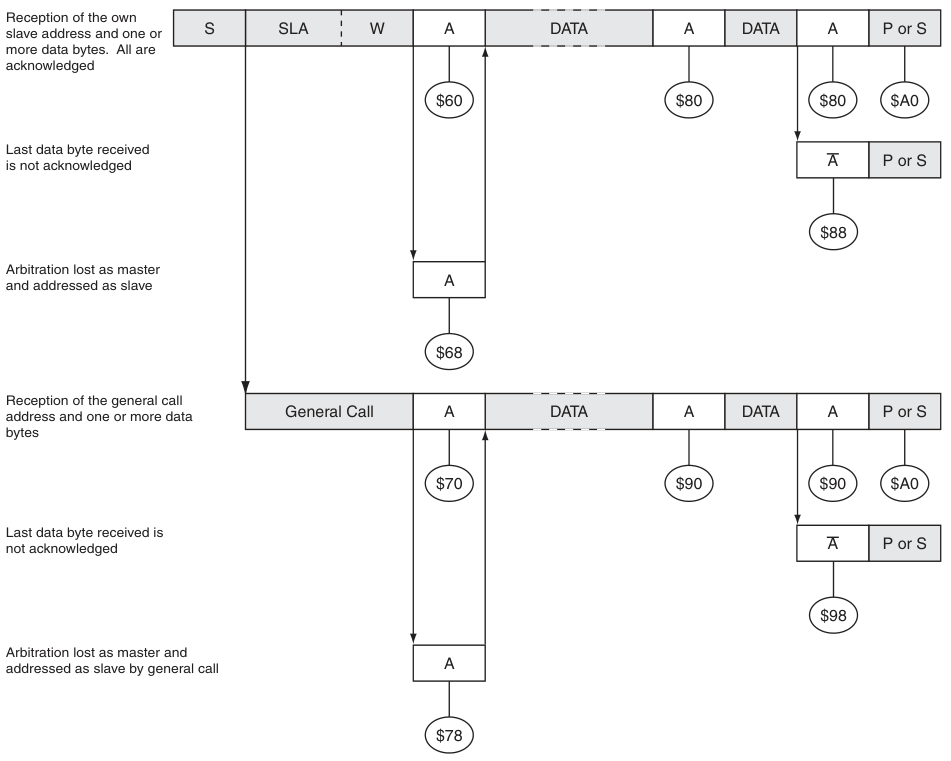
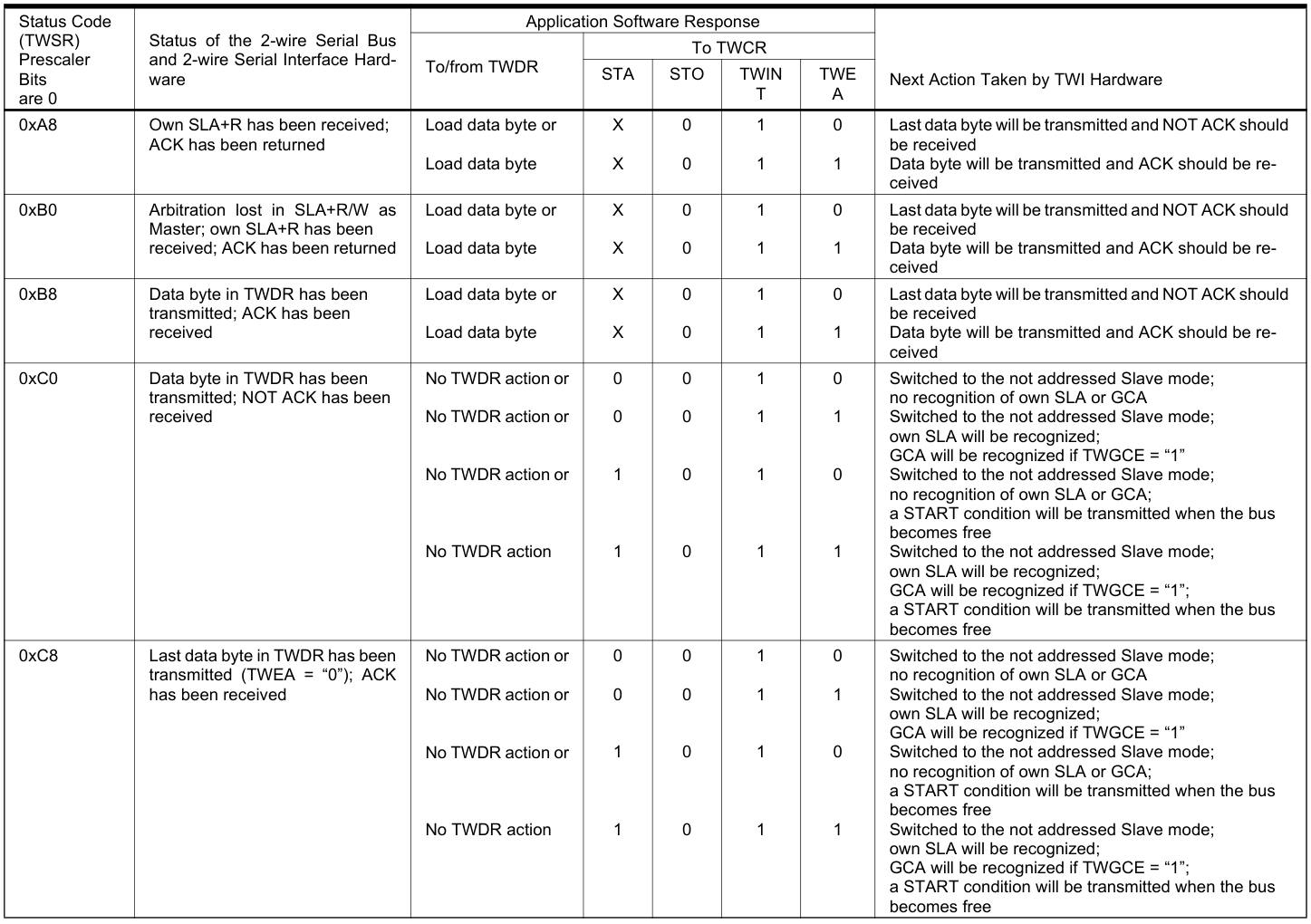
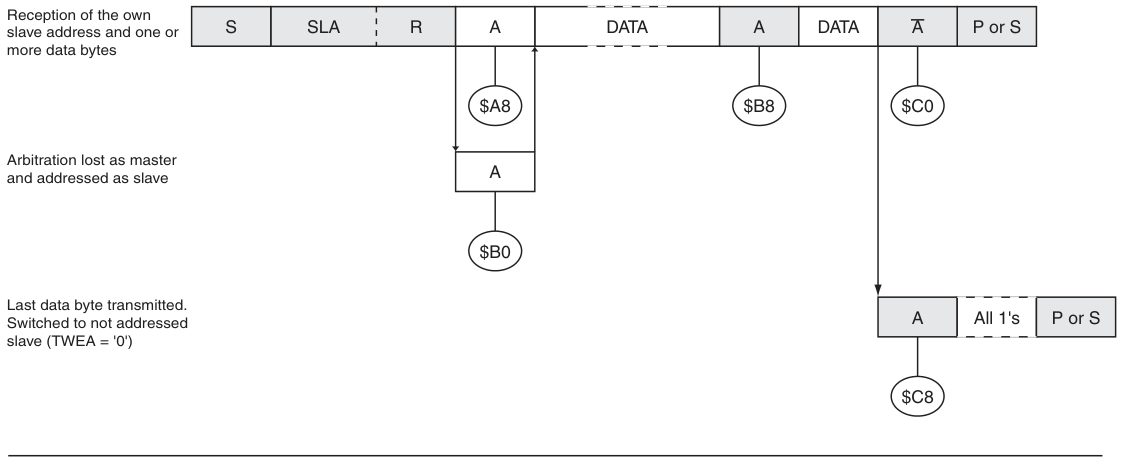

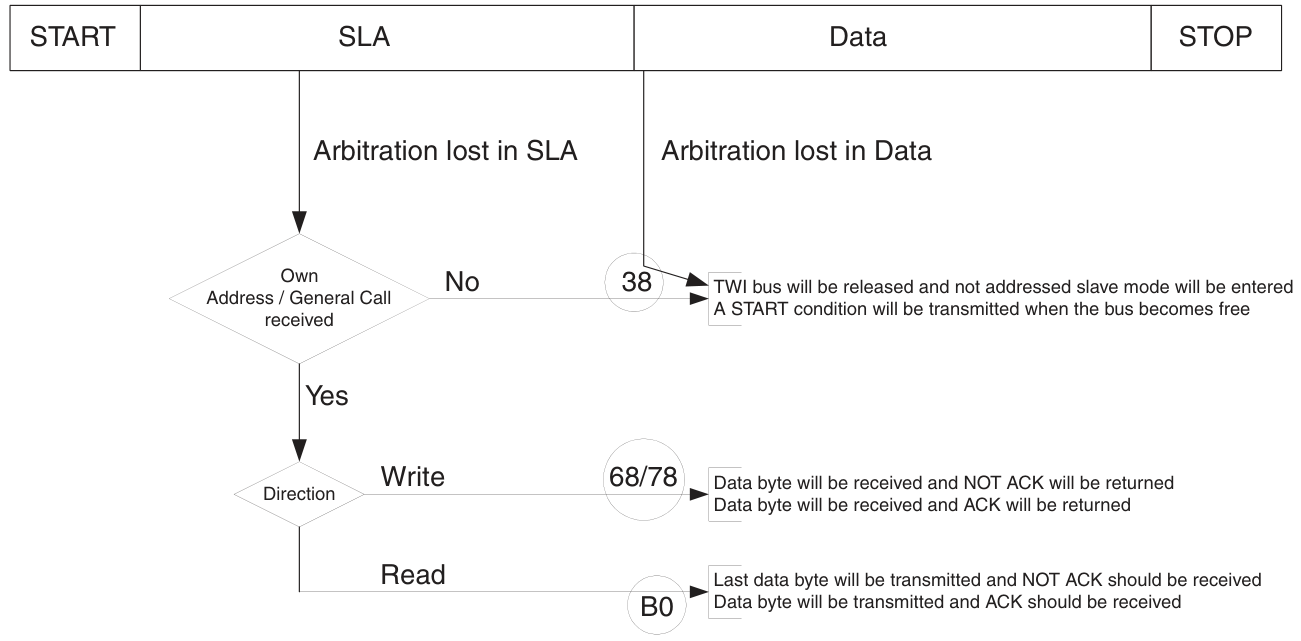







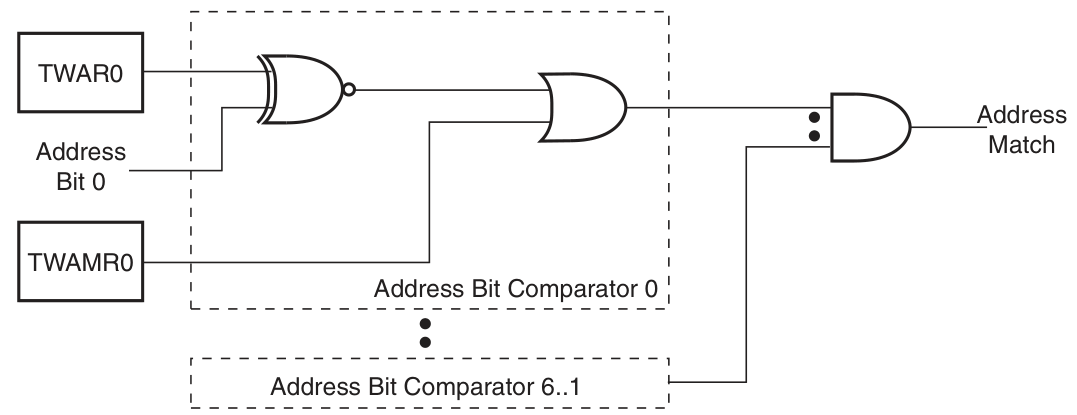



【推荐】国内首个AI IDE,深度理解中文开发场景,立即下载体验Trae
【推荐】编程新体验,更懂你的AI,立即体验豆包MarsCode编程助手
【推荐】抖音旗下AI助手豆包,你的智能百科全书,全免费不限次数
【推荐】轻量又高性能的 SSH 工具 IShell:AI 加持,快人一步
· 25岁的心里话
· 闲置电脑爆改个人服务器(超详细) #公网映射 #Vmware虚拟网络编辑器
· 零经验选手,Compose 一天开发一款小游戏!
· 因为Apifox不支持离线,我果断选择了Apipost!
· 通过 API 将Deepseek响应流式内容输出到前端